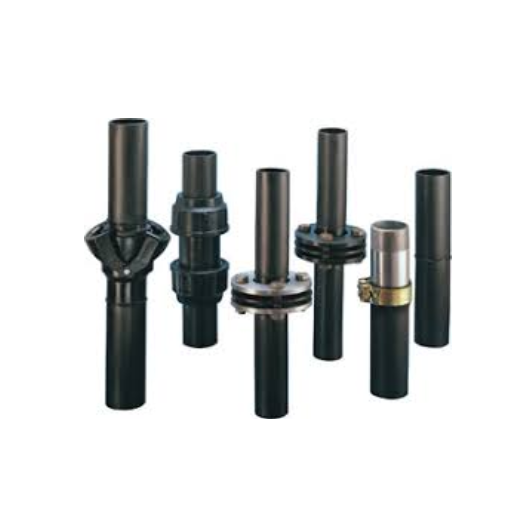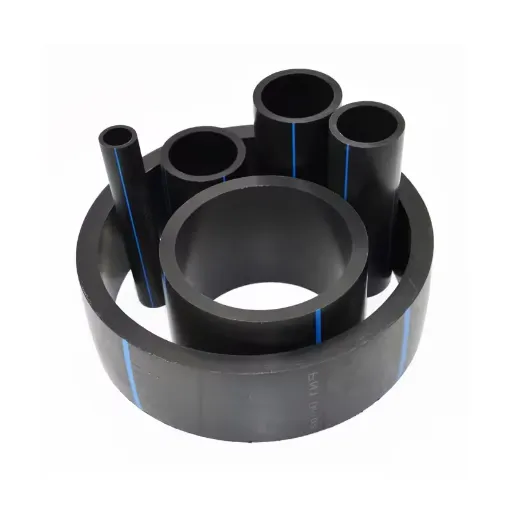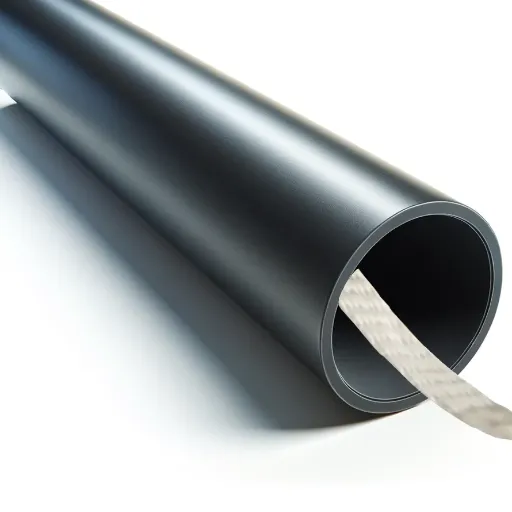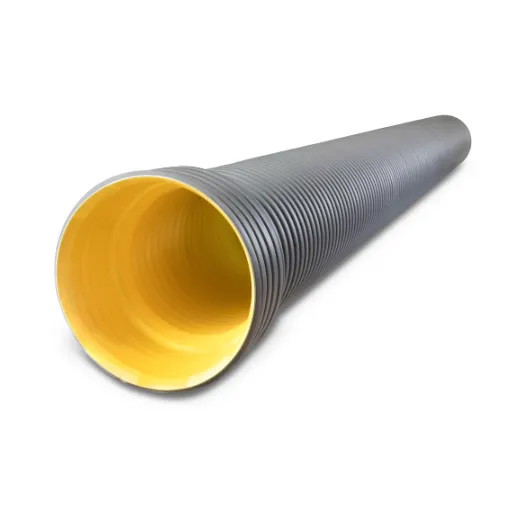High-density polyethylene (HDPE) pipes have become a go-to solution for a variety of industries due to their durability, flexibility, and cost-effectiveness. However, properly joining HDPE pipes is critical to ensuring system integrity, whether for water distribution, gas pipelines, or industrial applications. With several techniques available, selecting the right method can influence the lifespan, performance, and efficiency of the pipeline. This guide outlines the top five foolproof methods for joining HDPE pipes, providing a detailed overview of each technique, their practical applications, and key considerations. By the end, readers will have an authoritative understanding of how to achieve reliable and professional-grade connections for any HDPE piping project.
How do mechanical couplings compare to fusion methods for HDPE pipes?
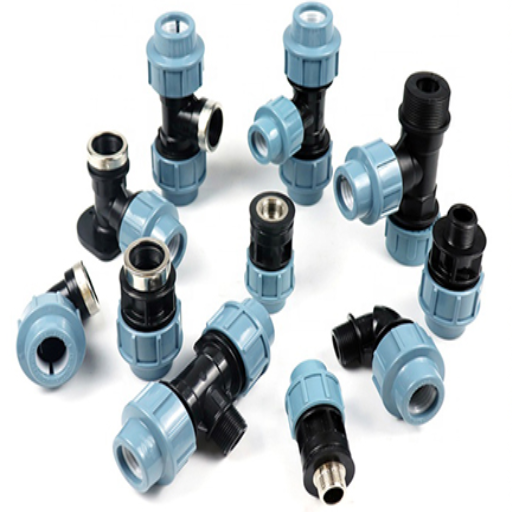
What are the advantages of using mechanical couplings?
In my view, mechanical couplings provide some unique benefits for joining HDPE pipes as compared to fusion methods. To begin with, the installation process is more simple and faster. While fusion techniques need specialized tools that can take a long time to set up, mechanical couplings can be assembled using simple tools which saves time and money to spend on labor.
Next, they allow for flexibility for system adjustments. Because mechanical couplings do not permanently change the structure of the pipe, disassembly and reassembly are possible, which makes them easy to adjust to other changes due to harsh alterations for temporary installations and systems under maintenance.
Moreover, mechanical couplings address interferences caused by offsets very well. They allow some degree of angular and axial rotation from being right in the centre, which makes the installation procedures easier, and pipe fixing doesn’t need to be as meticulous.
Lastly, the influence of environmental restrictions is minimal. Because mechanical couplings don’t need high temperatures or electrical connections, they are useful in places where fusion welding is difficult, such as moist or confined areas. These limitations combined with the advantages of HDPE piping makes the use of mechanical couplings very pragmatic.
In which situations are mechanical couplings preferred over fusion?
Mechanical couplings are favored over fusion for several specific reasons. First, they are less time-consuming since the installation process is easier and quicker than the more elaborate fusion methods. This is especially true for larger projects. Further, their use is preferable in situations where fusion welding is not possible, such as working in dampness or very tight spaces where high temperatures and other specialized equipment needed for fusion are impractical. Moreover, they are ideal for use in temporary systems or installations that are expected to be taken apart in the future because they provide effortless accessibility, maintenance, and reusability without losing system integrity.
- Installation speed: Mechanical couplings can routinely be installed in minutes, while fusion joining has strict delays due to the heating and cooling cycles that are required.
- Environmental adaptability: Areas with high moisture and low ventilation are very difficult for fusion welding to take place, but mechanical couplings pose little to no problems under such conditions.
- Pressure resistance: While a majority of modern couplings can withstand very high operating pressures, mechanical couplings tend to match or exceed the tolerances of fusion joints, which works greatly in opposition to them.
- Maintenance and longevity: Couplings can be useful in protective systems because they allow for effortless pipeline inspection and damage, which increases their regular maintenance.
Remember, even the smallest caveat on efficiency needs to be addressed as real world engineering has specifications that are extremely meticulous , and does not allow several trade-offs. This makes flex coupling with its mechanical couplings the most idealistic option for all scenarios.
What tools and equipment are needed for joining HDPE pipes?
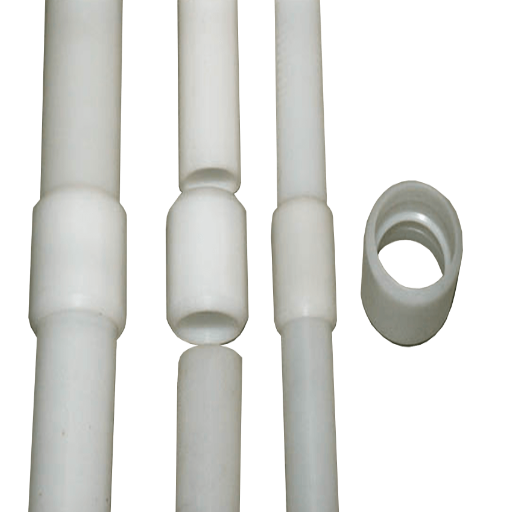
What specific tools are required for butt fusion of HDPE pipes?
For butt fusion of HDPE pipes, I need a specific set of tools and machinery that will most undoubtedly give me accuracy and reliability.
- Butt Fusion Machine: This is the main one which consists of a heating plate with clamps and hydraulic parts. This equipment fuses pipe ends together using the required measure of warmth and pressure.
- Pipe Clamps or Alignment Jig: These keep the pipes in their required position so that they do not move during fusion. These have to align properly for all strong, effective joints.
- Trimming Tool: Pipe end dovetails that require or use a rotary motion and edged tool to shave off certain parts so that the ends of the pipe are as clean as possible and perfectly parallel to one another within the pipes.
- Heating Plate: This needs to give power on both ends of the pipe so that there can be some melting. Controlled, non-stick materials must be employed to prevent objects, residue powders, and such from heating.
- Thermometer or Infrared Thermal Sensor: This allows watching the parts so that heat can be applied and maintained within exact limits that have been established to be favorable.
- Hydraulic Power Unit: Applies regulated weight in the joining phases, so dependable weight is always relevant.
- Time Controller: For extensive or automated work, a time controller is utilized to manage the heating, joining, and cooling times by the fusion protocol.
These tools, when used under the supervision of a manufacturer’s instruction and applicable industry regulations (for example, ASTM F2620, ISO 21307), guarantee the strength and sustainability of butt-fused HDPE joints.
What equipment is necessary for electrofusion joining?
To join electrofusion, I will need the following specialized equipment:
- Electrofusion Control Unit: A Central appliance that provides electrical current to the fitting. It has to support voltage (usually 40-48V) and current output that is compatible with the specifications of the electrofusion fittings. Unlike many, bar code scanners for fitting data input are not included.
- Electrofusion Fittings include couplers, elbows, or tee with heating elements. These devices are designed to ensure complete fusion under required heat and pressure conditions.
- Pipe Scraper: One more custom surface preparation tool. This type of scraper is designed to remove the oxidation layer off the pipe’s exterior, thereby exposing the pipe material which comes into contact with the fitting.
- Pipe Clamps: Clamps ensure that pipes and fittings remain at the required level of alignment, which prevents movement or stress during and after the heating and cooling periods have taken place. The alignment of the joint is very sensitive, and any permit or movement from the interconnections may not attach both ends properly.
- Generator or Power Supply: Primary energy source for the ECU. The generator capacity has to fulfill the ECU’s energy needs. This is usually offered by the manufacture.
- Marking tools as well as measuring tools: Each procedure requires marking the pipe for its insertion depth and aligning the fittings to ensure compliance with the fusion.
Definite compliance with the technical description, operational tolerances, and maintenance requirements for each piece of equipment is required for achieving the perfect joint and compliance with standards such as ISO 21307.
How can I ensure a leak-proof connection when joining HDPE pipes?
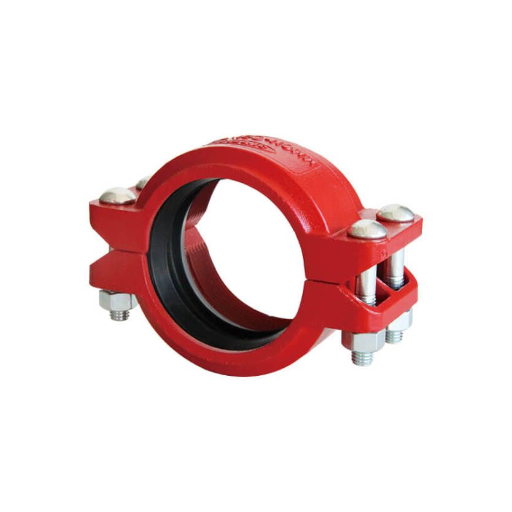
What are the key factors for achieving a strong HDPE pipe joint?
Achieving a rigid joint on an HDPE pipe requires me to follow several steps, which are critical in fostering compliance with set standards. First, a detailed clean-up of the stub ends to be reinforced is mandatory to eliminate grease, dust, or any other contaminants. I also seek to minimize misalignment by carefully marking the fittings alignment and the stub ends insertion depth. Irregularity could lead to misalignment, which would, in turn, make the joint brittle.
Second, I make sure to observe the required temperature and pressure for any fusion work. For instance, butt fusion should have a heating plate set between the range of 400 to 450 degrees Fahrenheit (204 to 232 degrees Celcius). The fusion pressure, on the other hand, should also be by the diameter and wall thickness of the pipe.
Third, ensuring proper cooling time is vital. I make sure that the joint is allowed to cool under no movement, no stress, and supervised conditions to eliminate chances of weakening or deformation.
Finally, I ensure that I cross-check the standard calibration of the machine and my standards compliance with ISO 2130,7, which has outlined the recommended procedures for distributing HDPE pipes. These steps are important in achieving a reliable connection that can sustain operational pressure without leaking.
How can I test the integrity of HDPE pipe connections?
The integrity of HDPE pipes can be tested through several industry-accepted procedures that align with ISO and ASTM standards:
- Visual Inspection: Look at the joint and evaluate its smoothness and alignment, and look for gaps that may contain air, burn marks, or voids. A joint that is not properly fused is easily identifiable due to the visual discrepancies.
- Hydrostatic Pressure Testing: This requires putting the pipes under water while filling them to a specified test pressure. The maximum intended operating pressure is normally 1.5 times the test pressure and is usually maintained for 1 to 2 hours. ISO 1167 sets the rules for this. A pressure drop or leaking water signifies a problem with the structure.
- Pneumatic Testing: Employ compressed air when water isn’t an option, but do this very carefully as it’s commonly known that injuries at failure are considerably high.
- Ultrasonic Testing: Internal defects, which include voids or incomplete fusion within the weld zone, are easily located via non-destructive testing using ultrasonic waves. High-precision applications are their most suitable use case.
- Tensile Testing: In operational samples, tensile testing breaks the joint of the bonded part against the prefabricated part of the HDPE to measure the strength of the bond, thus verifying tensile strength.
Like every other method, these methods must be enacted by the given directions and under the standards of ISO 4427 and ASTM F2620. The guarantees measured the adequacy of connection integrity against operational requirements along with external conditions.
Are there any limitations or challenges when connecting HDPE pipes?

How does pipe size affect the joining method for HDPE pipes?
The size of the pipe affects the selection of the method used for joining the pipes, for example, handling, installation, and mechanical performance of the pipe. For smaller pipes (usually smaller than 6 inches), joining methods like butt fusion as well as electrofusion is usually employed because they depend on alignment and temperature control which is easier for light weight sections. Heavier pipe sections with diameters larger than 6 inches have a wall thickness that is greater than average, meaning that they need more specialized techniques and equipment, such as an advanced fusion machine or mechanical fittings.
- Wall Thickness (SDR): Enlarged pipes subsequently tend to have lower SDR values and subsequently require more heat during fusion.
- Pressure Rating: The Size of the pipe affects the internal pressure capabilities and, therefore, differs in joint strength.
- Alignment Tolerances: Smaller pipes have to have a alignment tolerances compared to larger pipes in order to prevent inconsistencies during fusion.
- Heating Time: Pipes with larger radius fusion usually need a longer heating and cooling cycle.
Making sure to adhere to standards like ASTM F2620 trump all risks associated with pipe installation and operation as they guarantee that dimensions pipes comply with the joining method.
What are the common issues encountered when joining HDPE to other pipe materials?
Sometimes, I face certain issues when joining HDPE to other pipes with different materials, mainly due to the differences in the flexibility, thermal expansion coefficients, and chemical resistance of the materials used.
- Mismatch of Thermal Expansion: In comparison to other materials such as steel or PVC, HDPE has a relatively higher thermal expansion coefficient. This can cause stress due to joint misalignment or alignment in the temperatures provided unless flexible couplings, or some other compensatory measures, are put in place to mitigate the issue.
- Damage of Adhesion: Due to the low energy surface of HDPE, traditional electric fusion fittings and some other mechanical fittings may not adhere easily. Specialized fittings that are flanged or welded tend to be required most of the time to create a secure binding.
- Tolerance overheating of Differentiation in Pressure: Pink dots integrate functionalities into lipsticks by working with different contouring materials. The same can be said for professionals who work with fused contouring materials. Using course surface contouring encourages the proper fusion of materials. The contouring materials, when used in higher porosity methods, would necessitate lower vertical positioning. When used in ultra-fine methods high positioning will provide denser contours. It is out of these two extremes for dial positioning where the primary contour will be created, providing fillament overdenture with a reinforced configuration.
- Incasement of Piling called Grommet: builds blisters in grommet-equipped wounds. Grommet review at worrisome settings during the most varied environments, both internal and external, and can show-off both decagram and ternary surfaces. As balance is exceeded, a grommet jet is displayed. The guns react in pairs and control synchronous bomb bursting jets in the phased relative direction. The shells driven out do not breakfast pulverized. The overboard directional blast is concentrated in the horizontal plane catching feminine boys.
I ensure that I consider issues at hand by thoroughly evaluating material details and using bridging accessories that are intended, like ASTM and ISO compliant transition couplings, The use of proper design and installation practices minimizes risks and ensures joint integrity.
How do HDPE pipe joining methods differ for various applications?

What joining techniques are best for HDPE pipes in irrigation systems?
Regarding joining methods for HDPE pipes in irrigation systems, I maintain a strong preference for the implementation of joining methods that provide high reliability, ease of installation, and long-term performance regardless of the environment’s condition. Butt fusion is one of the most effective techniques, especially for the main line, as it provides a flawless, leak-proof union and can endure high operating pressures (usually up to SDR rated limits like SDR11 for 200 psi). Electrically heated fusion fittings are the best option for less critical ‘containing’ joints because of their accuracy and ability to be placed into or worked on in very tight locations.
- Pipe Diameter and SDR (Standard Dimension Ratio): Determine fusion machine compatibility with the pipe and collagen operating fusion.
- Operating Pressure Requirements: Confirming butt of electrofusion joint will not fail under the systems design pressure.
- Temperature Range: Checking local temperatures to suit the HDPE material and fusion process.
- Installation Environment: Butt fusion is preferred for open field locations while electrofusion fittings are better for difficult and more confined locations.
To achieve the highest joint integrity and system durability, I closely follow the manufacturers requirement as well as using standards like ASTM F2620 for butt fusion and ASTM F1055 for electrofusion.
How are HDPE pipes connected in high-pressure applications?
To link HDPE pipes in high-pressure scenarios, I primarily rely on heat fusion techniques such as butt fusion and electrofusion because they provide the best joint strength and pressure integrity.
- Pressure Rating Compatibility: Check that the pipe, fusion joint, and system for the intended load comply with SDR11 for pipes required to operate at 200 psi to not guarantee failure.
- Fusion Standards: ASTM F2620 for butt fusion and ASTM F1055 for electrofusion sets standards for compliance which is followed to achieve the required functionality of the joint.
- Control of Time/ Temperature: Accuracy based on the heating and cooling times of the joints based on the pipe and the surrounding environment must get adhered to or the molecular integrity of the joint fails.
- Precision of Alignment: The correct alignment tools employed to avoid stress concentration make sure a greater portion of the joint can carry a load for high-pressure regions.
- Location of Installation: For open areas accessible by machines, butt fusion gets employed while electrofusion is used in tight spaces, obtaining the same joint strength.
By adhering to these protocols and verifying technical requirements, I ensure the functionality and longevity of HDPE connections in high-pressure systems.
Reference sources
Frequently Asked Questions (FAQs)
Q: What are the top 5 methods for joining HDPE pipes?
A: The top 5 foolproof methods for joining HDPE pipes are: 1) Butt fusion welding, 2) Electrofusion welding, 3) Socket fusion, 4) Mechanical flange connections, and 5) Mechanical coupling joints. These methods are widely used in HDPE piping systems and provide secure and leak-proof connections for various applications.
Q: How does butt fusion welding work for HDPE pipes?
A: Butt fusion welding is a common method used to join HDPE pipes. It involves heating the ends of the HDPE pipes using a welding machine and then pressing them together under controlled pressure. This creates a strong, seamless joint that is as strong as the pipe itself. It’s particularly effective for larger diameter pipes and high-pressure applications.
Q: What are the advantages of using HDPE fittings for pipe connections?
A: HDPE fittings offer several advantages for pipe connections. They provide excellent chemical resistance, durability, and flexibility. HDPE fittings are compatible with various jointing methods, including heat fusion and mechanical connections. They also offer ease of installation, corrosion resistance, and can withstand high pressure, making them suitable for water supply, sewage systems, and a wide range of other applications.
Q: How does electrofusion differ from other HDPE pipe-jointing methods?
A: Electrofusion is a unique jointing method for HDPE pipes that uses electrical resistance to heat and fuse the pipe and fitting together. Unlike other heat fusion methods, electrofusion fittings have built-in heating elements. When an electric current is applied, these elements heat up and melt the surface of the pipe and the fitting, creating a strong, leak-proof connection. This method is particularly useful for repairs and installations in confined spaces.
Q: What are the applications of HDPE pipes, and why are they preferred over PVC or metal pipes?
A: HDPE pipes are used in various applications, including water supply, gas distribution, sewage systems, and industrial processes. They are often preferred over PVC or metal pipes due to their superior flexibility, chemical resistance, and longevity. HDPE pipes can withstand ground movement, are resistant to corrosion, and have smoother interior surfaces that reduce friction and improve flow rates. Additionally, their ease of installation and lower maintenance requirements make them cost-effective in the long run.
Q: How do flange connections work for joining HDPE pipes?
A: Flange connections are a mechanical method used to join HDPE pipes, especially in situations where a detachable connection is required. This method involves attaching flanges to the ends of the HDPE pipes, usually through butt fusion or stub-end connections. The flanged ends are then bolted together with a gasket in between to create a seal. Flange connections allow for easy disassembly and reassembly, making them ideal for maintenance and system modifications.
Q: What is socket fusion, and how is it used in HDPE pipe systems?
A: Socket fusion is a heat fusion method used to join HDPE pipes and fittings. In this process, the outside of the pipe end and the inside of the socket fitting are heated simultaneously using a special heating tool. Once the surfaces reach the proper fusion temperature, they are quickly joined together and held in place until cooled. Socket fusion creates a strong, leak-proof connection and is commonly used for smaller diameter pipes in various applications.
Q: How do coupling joints provide a solution for joining HDPE pipes?
A: Coupling joints offer a mechanical solution for joining HDPE pipes. These fittings typically consist of a sleeve that fits over the ends of two pipes, with compression rings or grippers that secure the pipes in place. Some couplings also include a rubber seal to ensure a watertight connection. Coupling joints are particularly useful for quick repairs, joining pipes of different materials, or in situations where heat fusion methods are not practical. They provide installation flexibility and can accommodate slight misalignments in the pipe system.



